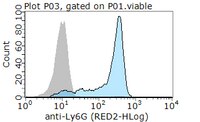The Journal of neuroscience : the official journal of the Society for Neuroscience
Nelson, CD; Kim, MJ; Hsin, H; Chen, Y; Sheng, M
The Journal of neuroscience : the official journal of the Society for Neuroscience
33
12122-35
2013
Mostra il sommario
Activity of glycogen synthase kinase-3β (GSK-3β) is required for long-term depression (LTD) via molecular mechanisms that are incompletely understood. Here, we report that PSD-95, a major scaffold protein of the postsynaptic density (PSD) that promotes synaptic strength, is phosphorylated on threonine-19 (T19) by GSK-3β. In cultured rat hippocampal neurons, phosphorylation of T19 increases rapidly with chemical LTD and is attenuated by pharmacologic or genetic suppression of GSK-3β. In organotypic rat hippocampal slices, we find that a nonphosphorylatable PSD-95 mutant (T19A) tagged with photoactivatable green fluorescent protein (PAGFP) shows enhanced stability in dendritic spines versus wild-type PSD-95, whereas the phosphomimetic mutant (PSD-95-T19D) is more readily dispersed. Further, overexpression of PSD-95-T19A, but not WT-PSD-95, impairs AMPA receptor internalization and the induction of LTD. These data indicate that phosphorylation on T19 by GSK-3β destabilizes PSD-95 within the PSD and is a critical step for AMPA receptor mobilization and LTD. | 23864697
 |
mBio
Short, KR; Reading, PC; Wang, N; Diavatopoulos, DA; Wijburg, OL
mBio
3
2011
Mostra il sommario
The transmission of the bacterium Streptococcus pneumoniae (the pneumococcus) marks the first step toward disease development. To date, our ability to prevent pneumococcal transmission has been limited by our lack of understanding regarding the factors which influence the spread of this pathogen. We have previously developed an infant mouse model of pneumococcal transmission which was strictly dependent on influenza A virus (IAV) coinfection of both the experimentally colonized "index mice" and the naive cohoused "contact mice." Here, we sought to use this model to further elucidate the factors which facilitate S. pneumoniae transmission. In the present report, we demonstrate that increasing the nasopharyngeal load of S. pneumoniae in the colonized index mice (via the depletion of neutrophils) and inducing a proinflammatory response in the naive cohoused contact mice (as demonstrated by cytokine production) facilitates S. pneumoniae transmission. Thus, these data provide the first insights into the factors that help mediate the spread of S. pneumoniae throughout the community.Streptococcus pneumoniae (the pneumococcus) is a major cause of worldwide morbidity and mortality and is a leading cause of death among children under the age of five years. Transmission of S. pneumoniae marks the first step toward disease development. Therefore, understanding the factors that influence the spread of pneumococci throughout the community plays an essential role in preventing pneumococcal disease. We previously developed the first reproducible infant mouse model for pneumococcal transmission and showed that coinfection with influenza virus facilitates the spread of S. pneumoniae. Here, we show that increasing the bacterial load in the nasal cavity of colonized individuals as well as inducing an inflammatory response in naive "contact cases" facilitates the spread of pneumococci. Therefore, this study helps to identify the factors which must be inhibited in order to successfully prevent pneumococcal disease. | 23015738
 |










